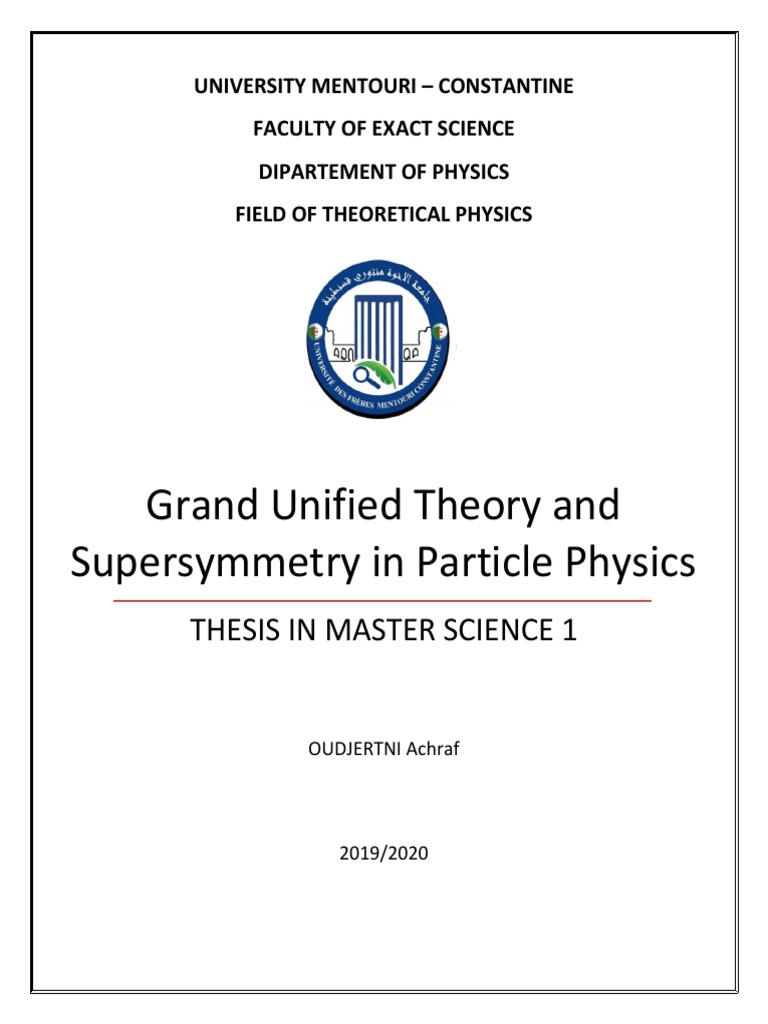In the quest for understanding the universe, physicists, biologists, and philosophers often find themselves traversing a complex labyrinth of hypotheses and theories. One of the most ambitious frameworks that seeks to unify the fundamental forces of nature is the Grand Unified Theory (GUT). Often depicted as the theoretical bridge linking electromagnetism, the weak nuclear force, and the strong nuclear force, GUT operates under the purview of particle physics. As we delve deeper into this multifaceted domain, an intriguing question emerges: should the Grand Unified Theory also endeavor to elucidate the origin of life itself? This inquiry encapsulates the intersection of physics and biology, opening a chasm of possibilities and profound challenges.
To embark on this intellectual odyssey, we must first consider the essence of the Grand Unified Theory. It posits that at high energies, or during the nascent moments of the universe, the distinctions between the fundamental forces dissolve into a singular, cohesive entity. Just as the primordial soup—often metaphorically likened to the cosmic cauldron—contained the essential ingredients for life, the GUT proposes a cosmic unification of forces, suggesting that the building blocks of nature could coalesce into something more complex. The early universe, characterized by extreme energy conditions, serves as a fertile ground for conceptualizing how disparate forces might intertwine.
As we probe this theoretical amalgamation, we encounter the biochemical foundations of life. Life, as we know it, emerges from the intricate dance of molecules. The emergence of complex organic molecules—considered the precursors to biological systems—was predicated upon the right conditions. Here lies the first parallel: just as the universe at its inception harbored the potential for forces to unite, the primordial Earth was rife with conditions that could stir molecular interactions into organized complexity. This begs the question: could understanding the forces at play in a GUT framework shed light on the biochemical pathways leading to life’s genesis?
Throughout history, philosophical discourse has often intertwined with scientific inquiry, particularly regarding the origins of life. The concept of abiogenesis postulates that life arose from non-living matter under specific environmental conditions. If we view this through the lens of GUT, we can imagine the forces facilitating chemical reactions that led to the first rudimentary life forms. This interplay transforms the GUT from an abstract theoretical construct into a potential narrative for biological emergence—an alluring merger of physics and biology.
Yet, despite the apparent synergy among fundamental forces and biochemical pathways, the task of painting a comprehensive picture remains formidable. While the GUT articulates a grand vision of unification at the subatomic level, it does not inherently encompass the myriad of complex interactions that characterize biological systems. Just as poets invoke metaphors to convey layered meanings, scientists must deploy their tools to decipher the lyrical complexity of life’s origins.
A metaphor that elegantly illustrates this divergence is the concept of a symphony. In a symphony, individual instruments play distinct melodies, yet they converge into a harmonious orchestra. The challenges lie in the composition and interactions of those melodies. Similarly, while GUT attempts to unify forces within the framework of physics, the emergence of life encapsulates a different orchestration—requiring biochemical, environmental, and evolutionary influences. The harmony of life thus cannot be solely reduced to the forces articulated by GUT; it demands a multifactored exploration.
Some might argue that seeking to integrate life’s origins into the GUT framework risks an oversimplification of complex biological narratives. This concern resonates through the annals of scientific debate, suggesting that while unification theories can inspire revolutionary insights, they may also grapple with the inherently stochastic nature of life. The non-linear pathways leading to the development of biological systems are characterized by uncertainties and serendipities that resist the rigidity of unified equations.
Moreover, the question arises: is the desire for a comprehensive explanation of life stemming from a quest for understanding, or is it a reflection of a deeper philosophical yearning? The GUT, in its ambition, reflects humanity’s innate desire to connect disparate phenomena—a longing to uncover the unifying threads that bind existence. This quest can be seen as a microcosm of the greater philosophical discourse surrounding life itself: Are we, as sentient beings, striving to trace our lineage back to the stars that birthed our elementary components? If so, the GUT might provide a tantalizing framework, yet it must contend with the nuances of life’s narrative.
As we meander through the intersection of cosmology, physics, and biology, we arrive at the realization that while the Grand Unified Theory presents an exhilarating vista of fundamental forces, its role in explaining the origin of life is fraught with complexity. The forces that bind the universe may not have sufficed to compose the intricate tapestry of biological existence. Instead, the inquiry into life’s genesis continues to unfold as an interdisciplinary saga that transcends the boundaries of physics, beckoning both scientific rigor and philosophical exploration.
In conclusion, the Grand Unified Theory, while aspirational in its aim to unify the cosmos, must not be burdened with the sole responsibility of elucidating the origins of life. The existence of life is a testament to the convergence of natural laws, chance chemical reactions, and evolutionary ingenuity—a tapestry woven with kaleidoscopic threads of possibility. The dialogue between physics and biology thus remains an open discourse, inviting both the curious and the learned to partake in a quest for understanding that may well be as enigmatic as the universe itself.












